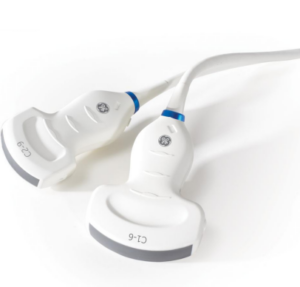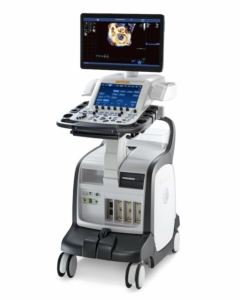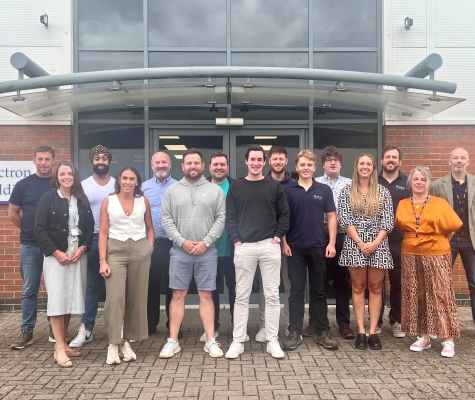GE is constantly updating and upgrading its ultrasound technology, typically with a focus on improving the clarity of images. XDClear is GE’s best transducer technology enhancement to date. Its architecture tests the limits of ultrasound image quality by producing a more powerful, pure, and efficient sound wave with a wider bandwidth than traditional GE transducer technology. This results in remarkable deep penetration, sensitivity, and higher resolution, making it effective for use on a wide range of patients. So, how did GE achieve these capabilities in its XDClear probes? And, how can it enhance your practice?
How XDClear Works
Some of the challenges innovators face when improving current ultrasound technology include the engineering of a high quality transmit pulse, efficient coupling between the system electronics and the transducer to convert the electrical energy to acoustic energy within the transducer and couple that energy into the body, and then compensating for the attenuation, diffraction, and reflection of the signal within the human body until the reflected signal is received and carefully processed.

GE manufactured a single piezoelectric crystal (PMN-PT and PZN-PT) to increase bandwidth compared to conventional PZT crystals by carefully creating a cylinder of the single crystal material. GE also developed an Acoustic Amplifier, which is a patented layer that sits between the transducer core structure and the rest of the mechanical housing to extend bandwidth and sensitivity, while simultaneously improving electrical impedance. The third critical improvement by GE is how it utilized the piezoelectric material to generate and transfer ultrasound energy through coupling layers to the body. Heat typically reduces performance and this process reduces heat and inversely increases sensitivity and penetration.
Complicated? We know.
To simplify it, the objective measure of probe performance is bandwidth: the range of frequencies the transducer can transmit and receive. If a transducer has a higher bandwidth, it can cover a broader frequency range. The result: higher sensitivity, resolution, greater performance, and the ability to cover the range of acoustic frequencies that used to require multiple different transducers. XDClear has greater bandwidth and therefore, can perform the functions that are a result of that!
What probes and systems do XDClear work on?
Systems that run probes with XDClear include:
- GE Logiq E9 with XDClear
- GE Logiq E9 with XDClear 2.0
- GE Logiq S8 with XDClear
- GE Logiq S7 with XDClear
- GE Vivid E9 with XDClear
- GE Vivid E90
- GE Vivid E95
Probes that run XDClear include:
- GE C1-6-D
- GE C1-6VN-D
- GE C2-9-D
- GE C2-9VN-D
- GE C3-10-D
- M5Sc-D
Note that XDClear is an advanced probe option for an ultrasound system. So, every XDClear probe runs XDclear, but not every system will run XDClear probes unless they have the advanced probes option, and that option enabled.

How can XDClear benefit your practice?
GE’s XDClear technology can help you diagnose faster and more confidently, especially with difficult to scan patients. It’s also more efficient, saving you energy with each scan. Since it’s single-crystal technology and Acoustic Amplifier creates more bandwidth, it can alone perform a range of tests that typically take multiple probes. What you’ll love most, it takes extraordinary images that will improve your practice and save you time.
Purchase a New or Refurbished Probe with XDClear
Contact Probo Medical today for a new or fully refurbished ultrasound system at a fraction of the OEM price! Call us at 866-513-8322 or fill out our contact form here.
About the Author
Brian Gill is Probo Medical’s Vice President of Marketing. He has been in the ultrasound industry since 1999. From sales to service to customer support, he has done everything from circuit board repair and on-site service to networking and PACS, to training clinicians on ultrasound equipment. Through the years, Brian has trained more than 500 clinicians on over 100 different ultrasound machines. Currently, Brian is known as the industry expert in evaluating ultrasounds and training users on all makes and models of ultrasound equipment, this includes consulting with manufacturers with equipment evaluations during all stages of product development.


